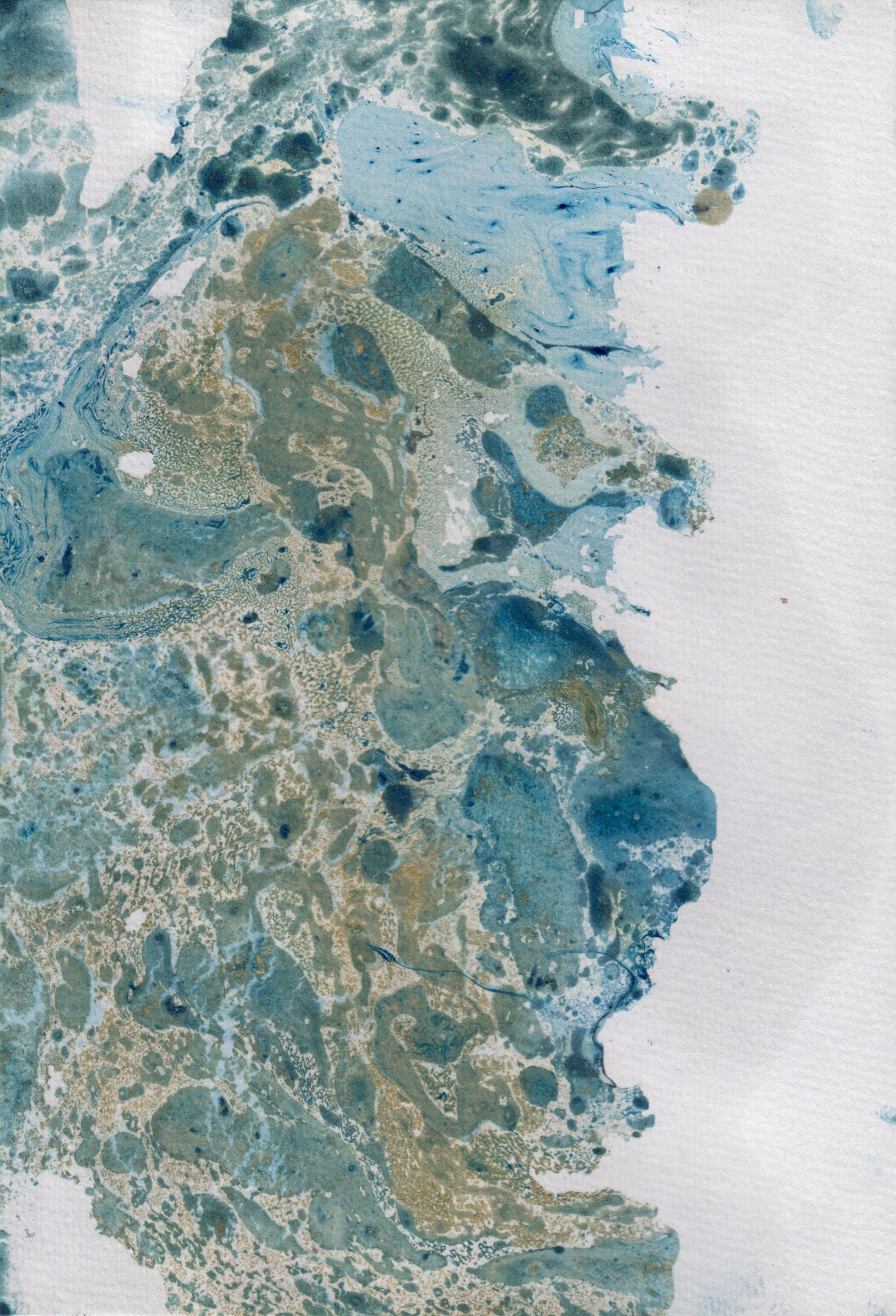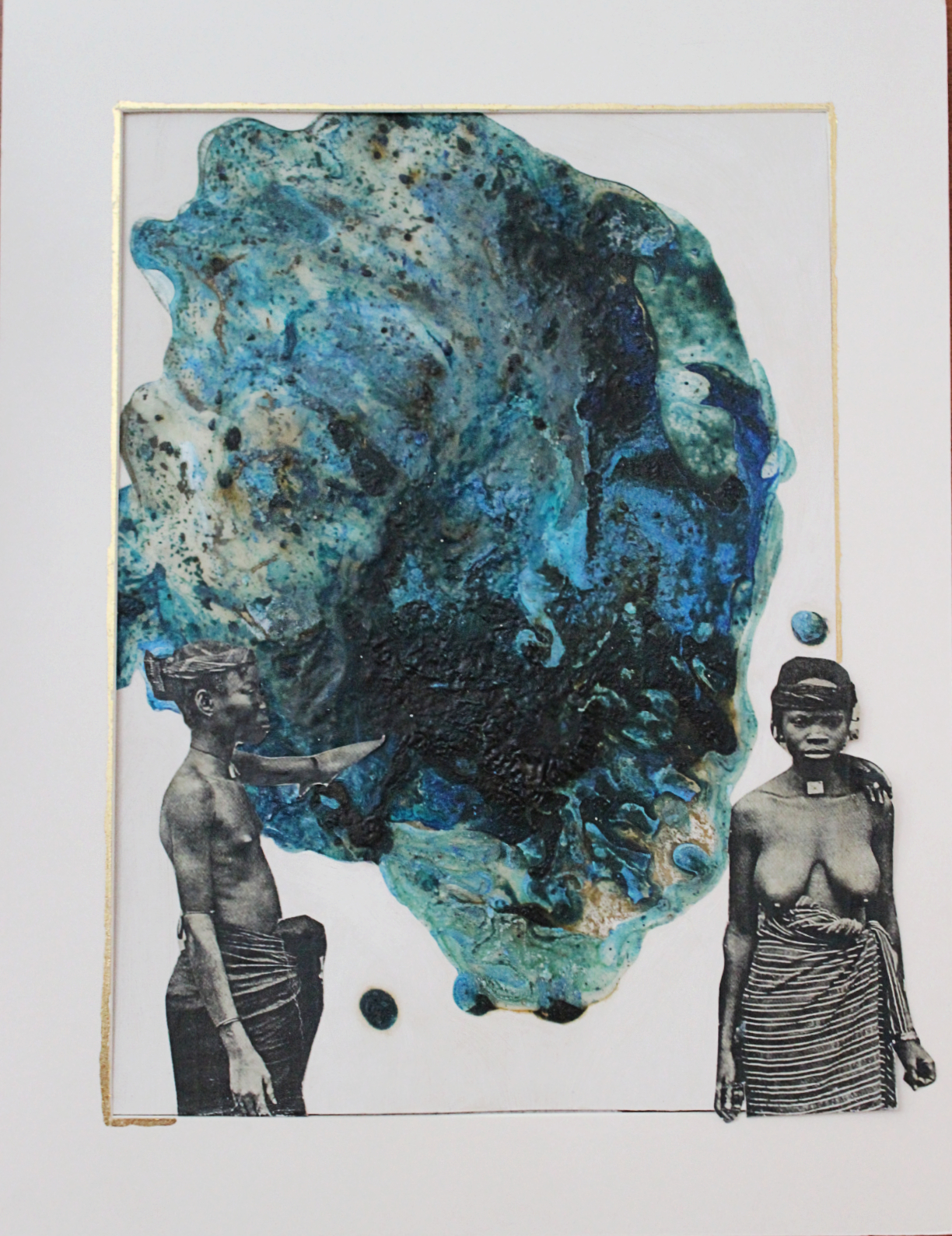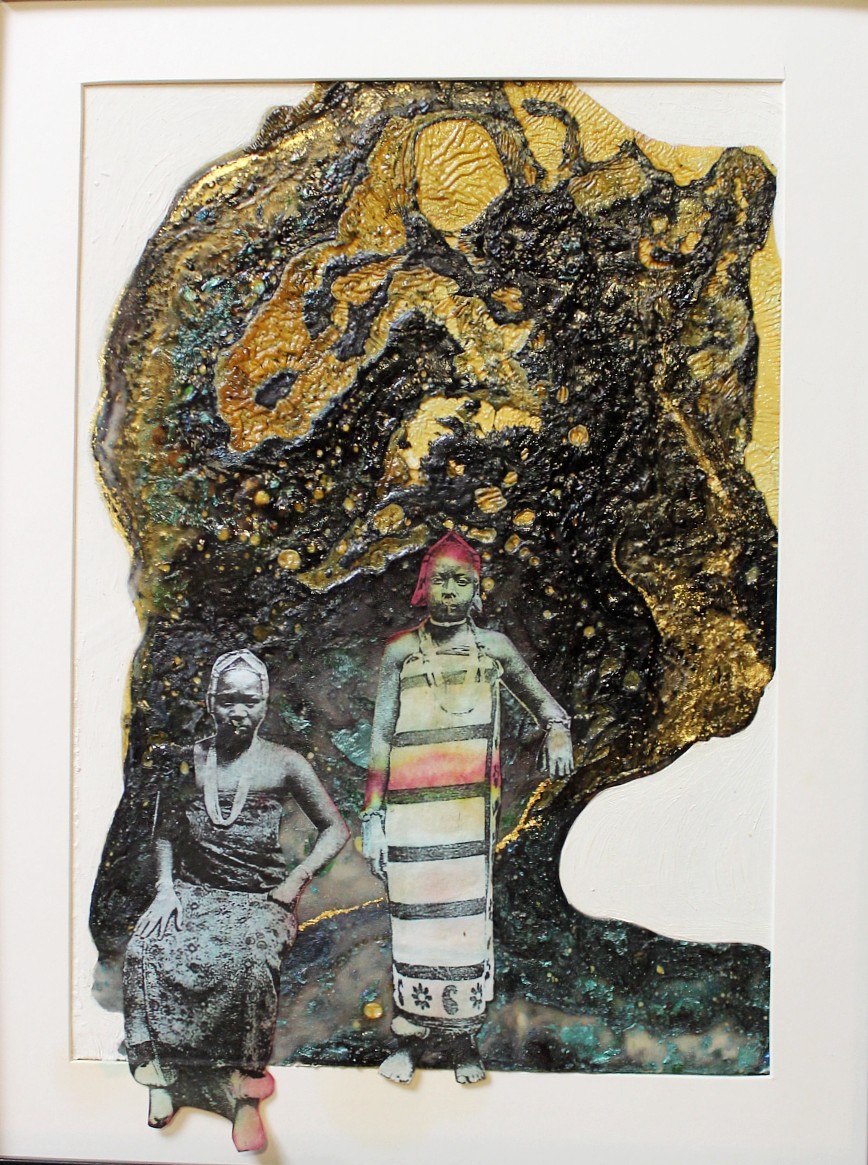Project Description
Dralega’s approach begins with “I am because they were”. Her practice is centred around re-framing history and using the process of iconography to invite viewers to meditation.
The result is a fierce gradient of vivid colours and textures reminiscent of natural stone, oceans and galaxies. She creates marbled backgrounds by floating oil paint, sprays paint and inks on water, before placing a piece of paper on top to make a print. The limited control over the outcome of the patterns makes the marbled background for the icons a process of letting go in the process of creation. The gold flakes a process of beautification of what the circumstances have provided – for her both necessary steps in reconciling with the historical mass traumas.
These marbled prints form the background for iconography of her, and our, ancestors. The women depicted include colonized subjects and ex-slaves. On these magnificent backgrounds, painted in the iconographic style, they are exalted above their position in the colonial gaze; Letaru gives dignity back to these women. Dralega’s exhibition entitled, “A Chasing After the Wind,” will turn the practice of icon-making and ancestor veneration as an answer to the question of history’s influence on the present moment.
These works, an invitation to meditation, provokes one to think about inhabiting the current moment and being able to reconcile with the past. It is a commemoration, remembering the ancestors and therefore making them present.
Collage
Dralega also experimented with pouring paints and glues onto surfaces. The process much like that of marbling requires a collaboration of artist and medium. The glue forms dry to mimic nature in decay and scar formations in the process of healing. The resulting images are a contrast of coarse turbulent forms looming ominously above the paper cutouts, which come from the colonial archives.
Removed from their original contexts the figures are rearranged and reconnected by way of a single thread of gold – a reference to the Japanese art of Kintsugi – symbolising repair of a ruptures past and beautification of the broken.
For more visit Letaru’s website, A Chasing After the Wind
Letaru Dralega: A Chasing After the Wind
By Erika Holum
Letaru Dralega is a recent artist in residence at 32° East | Ugandan Arts Trust. Dralega sought to explore identity in her work by investigating family history, a connection to the ancestors, and trauma that stems from a colonial legacy on the continent. Dralega deconstructs her own identity as a product of colonization, born from a British-Jamaican mother and Ugandan father, to interrogate the relevance of past trauma in the potential for healing for the future. Her work seeks to transform the feelings of anger, injustice, loss, and disinheritance by offering a space of communion and meditation with the ancestors through a sublime encounter with nature and orthodox Christian iconography in her work.
Dralega’s approach begins with the poetic: “I am because they were” and a nostalgic inquest to ask what could have been if the continent never been colonized. She mapped her family history, studied her generation’s lost connection to the ancestors, and excavated archives to uncover photographs of Africans in the diaspora during the Trans-Atlantic Slave Trade to understand a personal connection to the history that shaped the continent. Yet, her inquisition was met with questions of relevance as she discovered that “what could have been” is ultimately lost to us.
Referencing Ecclesiastes, Dralega’s exhibition entitled, “A Chasing After the Wind,” turns the practice of icon-making and ancestor worship as an answer to the question of history’s influence on the present moment. She conflates an orthodox Christianity’s belief in icons as a window to heaven and the traditional connection to the ancestors by creating icons from photographs taken of Africans during the colonial era. These images subvert the colonial gaze by sanctifying an image of a colonized subjects and transforming that image into a hallowed saints. The symbolic elements embedded in Dralega’s work are intended to use Christianity as a lens and icons as a window to the past, in order to consecrate the ancestors and connect the present generation to a history of the lost and dispossessed.
The pious rendition of the ancestors in Dralega’s work is overlaid onto a marbled backdrop that references the sublime nature of the early Romantics. The process of marbling itself– laying paint onto oil and making a print– alludes to the broader theme of letting go, as the paint swirls, moves, and forms without semblance of control. Dralega’s use of dark green and deep blue hues reflects nature as an altar, and symbolizes the potential for growth, restoration, and healing.
Following her residency at 32, Dralega plans to expand her project into twelve icons, which are meant to be displayed as twelve hours on a clock, a reference to the passage of time and progression of history. Dralega hopes her work allows viewers to commune with the ancestors through her work and, if only for a moment, to find rest, peace, and healing from the past. Her work is situated at a point of convergence and operates as a liminal space of remembrance, but also letting go of what is lost to time and history. Viewers are encouraged to enter into the delicate complexity of natural growth in hopes of transforming trauma and pain into healing for the future.





